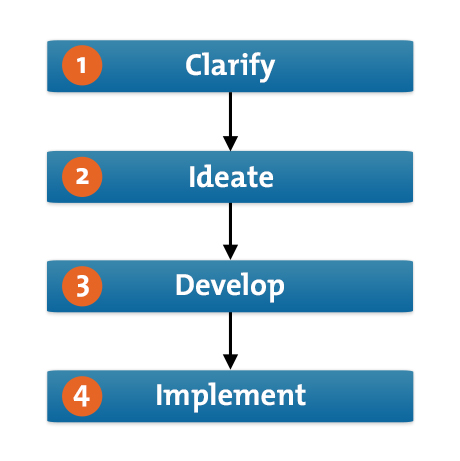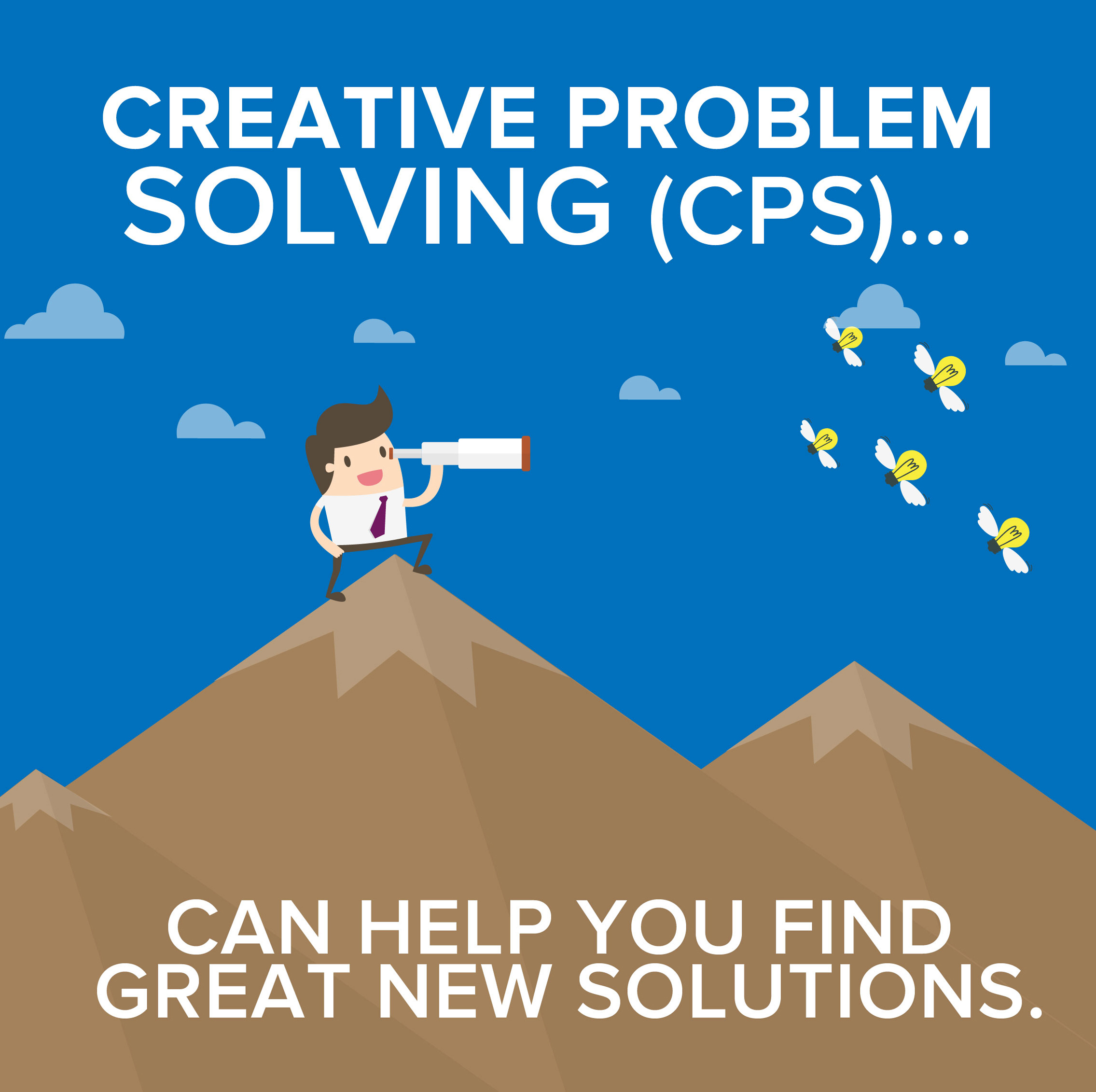Creative Problem Solving
Finding Innovative Solutions to Challenges

© iStockphoto
boboling
Discover new ways to look at things differently.
Imagine that you're vacuuming your house in a hurry because you've got friends coming over. Frustratingly, you're working hard but you're not getting very far. You kneel down, open up the vacuum cleaner, and pull out the bag. In a cloud of dust, you realize that it's full... again. Coughing, you empty it and wonder why vacuum cleaners with bags still exist!
James Dyson, inventor and founder of Dyson® vacuum cleaners, had exactly the same problem, and he used creative problem solving to find the answer. While many companies focused on developing a better vacuum cleaner filter, he realized that he had to think differently and find a more creative solution. So, he devised a revolutionary way to separate the dirt from the air, and invented the world's first bagless vacuum cleaner.
Creative problem solving (CPS) is a way of solving problems or identifying opportunities when conventional thinking has failed. It encourages you to find fresh perspectives and come up with innovative solutions, so that you can formulate a plan to overcome obstacles and reach your goals.
In this article, we'll explore what CPS is, and we'll look at its key principles. We'll also provide a model that you can use to generate creative solutions.
About Creative Problem Solving
Alex Osborn, founder of the Creative Education Foundation, first developed creative problem solving in the 1940s, along with the term "brainstorming." And, together with Sid Parnes, he developed the Osborn-Parnes Creative Problem Solving Process. Despite its age, this model remains a valuable approach to problem solving.
The early Osborn-Parnes model inspired a number of other tools. One of these is the 2011 CPS Learner's Model, also from the Creative Education Foundation, developed by Dr Gerard J. Puccio, Marie Mance, and co-workers. In this article, we'll use this modern four-step model to explore how you can use CPS to generate innovative, effective solutions.
Why Use Creative Problem Solving?
Dealing with obstacles and challenges is a regular part of working life, and overcoming them isn't always easy. To improve your products, services, communications, and interpersonal skills, and for you and your organization to excel, you need to encourage creative thinking and find innovative solutions that work.
CPS asks you to separate your "divergent" and "convergent" thinking as a way to do this. Divergent thinking is the process of generating lots of potential solutions and possibilities, otherwise known as brainstorming. And convergent thinking involves evaluating those options and choosing the most promising one. Often, we use a combination of the two to develop new ideas or solutions. However, using them simultaneously can result in unbalanced or biased decisions, and can stifle idea generation.
Tip:
For more on divergent and convergent thinking, and for a useful diagram, see Sam Kaner's 2001 book, "Facilitator's Guide to Participatory Decision-Making."
Core Principles of Creative Problem Solving
CPS has four core principles. Let's explore each one in more detail:
- Divergent and convergent thinking must be balanced. The key to creativity is learning how to identify and balance divergent and convergent thinking (done separately), and knowing when to practice each one.
- Ask problems as questions. When you rephrase problems and challenges as open-ended questions with multiple possibilities, it's easier to come up with solutions. Asking these types of questions generates lots of rich information, while asking closed questions tends to elicit short answers, such as confirmations or disagreements. Problem statements tend to generate limited responses, or none at all.
- Defer or suspend judgment. As Alex Osborn learned from his work on brainstorming, judging solutions early on tends to shut down idea generation. Instead, there's an appropriate and necessary time to judge ideas during the convergence stage.
- Focus on "Yes, and," rather than "No, but." Language matters when you're generating information and ideas. "Yes, and" encourages people to expand their thoughts, which is necessary during certain stages of CPS. Using the word "but" – preceded by "yes" or "no" – ends conversation, and often negates what's come before it.
How to Use the Tool
Let's explore how you can use each of the four steps of the CPS Learner's Model (shown in figure 1, below) to generate innovative ideas and solutions.
Figure 1 – CPS Learner's Model

From The CPS Process and Learner's Model by the Creative Education Foundation, based on the work of Alex Osborn and Sid Parnes. Adapted by G.J. Puccio, M. Mance, M.C. Murdock, B. Miller, J. Vehar, R. Firestien, S. Thurber, and D. Nielsen (2011). Reproduced with permission.
1. Clarify
Explore the Vision
Identify your goal, desire or challenge. This is a crucial first step because it's easy to assume, incorrectly, that you know what the problem is. However, you may have missed something or have failed to understand the issue fully, and defining your objective can provide clarity. Read our article, 5 Whys, for more on getting to the root of a problem quickly.
Gather Data
Once you've identified and understood the problem, you can collect information about it and develop a clear understanding of it. Make a note of details such as who and what is involved, all the relevant facts, and everyone's feelings and opinions.
Formulate Questions
When you've increased your awareness of the challenge or problem you've identified, ask questions that will generate solutions. Think about the obstacles you might face and the opportunities they could present.
2. Ideate
Explore Ideas
Generate ideas that answer the challenge questions you identified in step 1. It can be tempting to consider solutions that you've tried before, as our minds tend to return to habitual thinking patterns that stop us from producing new ideas. However, this is a chance to use your creativity.
Brainstorming and Mind Maps are great ways to explore ideas during this divergent stage of CPS. And our articles, Encouraging Team Creativity, Problem Solving, Rolestorming, Hurson's Productive Thinking Model, and The Four-Step Innovation Process, can also help boost your creativity.
Tip:
See our Brainstorming resources within our Creativity section for more on this.
3. Develop
Formulate Solutions
This is the convergent stage of CPS, where you begin to focus on evaluating all of your possible options and come up with solutions. Analyze whether potential solutions meet your needs and criteria, and decide whether you can implement them successfully. Next, consider how you can strengthen them and determine which ones are the best "fit." Our articles, Critical Thinking and ORAPAPA, are useful here.
4. Implement
Formulate a Plan
Once you've chosen the best solution, it's time to develop a plan of action. Start by identifying resources and actions that will allow you to implement your chosen solution. Next, communicate your plan and make sure that everyone involved understands and accepts it.
Tip:
CPS is a simple, general problem-solving approach, so don't rely on it solely to find effective solutions. There are a number of other tools that are more appropriate for analytical problem solving, such as Root Cause Analysis, The Simplex Process, and Cause and Effect Analysis.
Note:
There have been many adaptations of CPS since its inception, because nobody owns the idea.
For example, Scott Isaksen and Donald Treffinger formed The Creative Problem Solving Group Inc. and the Center for Creative Learning, and their model has evolved over many versions. Blair Miller, Jonathan Vehar and Roger L. Firestien also created their own version, and Dr Gerard J. Puccio, Mary C. Murdock, and Marie Mance developed CPS: The Thinking Skills Model. Tim Hurson created The Productive Thinking Model, and Paul Reali developed CPS: Competencies Model.
Sid Parnes continued to adapt the CPS model by adding concepts such as imagery and visualization, and he founded the Creative Studies Project to teach CPS. For more information on the evolution and development of the CPS process, see Creative Problem Solving Version 6.1 by Donald J. Treffinger, Scott G. Isaksen, and K. Brian Dorval.
Infographic
Click on the image below to see our infographic on Creative Problem Solving.
Key Points
Creative problem solving (CPS) is a way of using your creativity to develop new ideas and solutions to problems. The process is based on separating divergent and convergent thinking styles, so that you can focus your mind on creating at the first stage, and then evaluating at the second stage.
There have been many adaptations of the original Osborn-Parnes model, but they all involve a clear structure of identifying the problem, generating new ideas, evaluating the options, and then formulating a plan for successful implementation.
Apply This to Your Life
Have you ever faced a problem that you thought was insurmountable? Perhaps your boss has asked you to reduce spending in your department, but you can't see where to make cuts without sacrificing quality.
Try following the first step of the CPS process, and clearly identify the problem. Next, gather data and formulate the challenge. Then, you can explore ideas and come up with solutions. Finally, develop a plan of action and make your solution a reality.
This site teaches you the skills you need for a happy and successful career; and this is just one of many tools and resources that you'll find here at Mind Tools. Subscribe to our free newsletter, or join the Mind Tools Club and really supercharge your career!







Thank you, I appreciate the humor.
I think using Kotter's 8-step model is a great idea. I have to admit that it's a personal favourite, so I may be a bit biased!
I'd love you to ask this question on the Career Cafe Central forum. Just click on "start a new topic". Our members all help and learn from one another over there. You'll find the forum over here: https://www.mindtools.com/forums/viewforum.php?f=2
We look forward to seeing you around.
Yolandé
Mind Tools Team